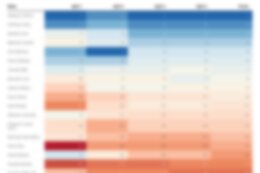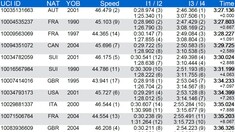Introduction
This blog outlines how King Abdullah University of Science and Technology (KAUST), as an early adopter, successfully integrated SAP Ariba with SAP Datasphere to build advanced analytics stories focused on procurement data. This integration was achieved as part of a proof-of-concept (PoC) project with the SAP Datasphere Adoption Program, showcasing the capabilities of SAP Ariba data in fulfilling specific procurement requirements within SAP Datasphere.
About KAUST
Established in 2009, King Abdullah University of Science and Technology (KAUST) is a graduate research university in Saudi Arabia focused on tackling scientific and technological challenges in fields such as food and health, water, energy, environment, and the digital domain. Through interdisciplinary research and innovation, KAUST aims to address both global and regional issues.
Recently, our team at SAP collaborated with KAUST on a short-term PoC project. The goal was to help KAUST leverage SAP Datasphere and SAP Ariba Foundation Model for actionable procurement insights by building analytics stories tailored to KAUST’s requirements. This blog provides an overview of the project, highlighting the steps taken to meet KAUST’s unique procurement needs.
Business Challenge
KAUST needed a robust solution for analyzing procurement data in real-time. They required:
Improved Spend Visibility: Consolidating procurement data across multiple sources for a comprehensive spend analysis.Real-Time Reporting: Transforming end-of-day reports into near real-time analytics for faster decision-making.Cost Optimization: Reducing manual processes and improving operational efficiency.
Solution
Utilizing SAP Datasphere’s integration capabilities, SAP Ariba data can be accessed from both strategic and operational perspectives using SAP Ariba Standard APIs. This integration allows KAUST to leverage foundational SAP Ariba models and pre-built stories in SAP Analytics Cloud to extract valuable insights and perform detailed analyses of their procurement processes.
Through the SAP Discovery Center Mission – Leverage SAP Ariba Foundation model in SAP Datasphere (cloud.sap) KAUST followed step-by-step guidelines to set up this integration, leveraging the BTP Data Extractor application. This open-source tool facilitated KAUST’s data extraction requirements, enabling a seamless PoC execution within the SAP ecosystem.
Technical Architecture
The technical architecture was designed to simplify complex SAP Ariba APIs, allowing KAUST to utilize pre-built SAP Analytics Cloud content integrated with SAP Datasphere’s Ariba models. This approach streamlined the extraction, transformation, and loading (ETL) processes, supporting KAUST’s objective to gain insights into procurement efficiency.
Process
The SAP team provided hands-on support throughout a four-week engagement, covering architectural guidance, technical setup, and customizations to the SAP data extraction samples. Weekly touchpoints ensured that KAUST could address challenges promptly, ultimately enabling them to complete the PoC successfully with guidance from the Discovery Center mission.
Metrics
The following metrics demonstrate the scale and impact of this PoC project:
Replication Volume: 22 Models, 104 Views across 51 tables.POC Data Volume: 1 GB of procurement data.Ariba Data Availability: 100% Achieved.
Success Measurements
KAUST observed significant improvements following the PoC, including:
Real-Time Analytics: By utilizing the Standard Sap Analytics Cloud Dashboards KAUST team was able to quickly deploy the Analytics Assets, which are getting updated in near real-time, enhancing KAUST’s ability to make prompt decisions.Reduced Manual Processes: The manual ETL process, which previously required constant oversight, is now fully automated with SAP Datasphere replication flows.
Next Steps towards Operational Solution:
The next steps involve commencing a structured implementation plan to transition KAUST’s PoC to a fully operational solution. This phase will begin with a comprehensive requirements review and finalization of the architectural design based on PoC learnings.
Acknowledgments
This project’s success was due to the combined efforts of SAP and KAUST teams. Special thanks to SAP colleagues Cameron Khorsandi, Uma Anbazhagan, and Harish Kintali for their guidance and support, and to KAUST team members Vikram Bagade and Venkata Rajasekhar Gottipati for their valuable collaboration.
IntroductionThis blog outlines how King Abdullah University of Science and Technology (KAUST), as an early adopter, successfully integrated SAP Ariba with SAP Datasphere to build advanced analytics stories focused on procurement data. This integration was achieved as part of a proof-of-concept (PoC) project with the SAP Datasphere Adoption Program, showcasing the capabilities of SAP Ariba data in fulfilling specific procurement requirements within SAP Datasphere. About KAUSTEstablished in 2009, King Abdullah University of Science and Technology (KAUST) is a graduate research university in Saudi Arabia focused on tackling scientific and technological challenges in fields such as food and health, water, energy, environment, and the digital domain. Through interdisciplinary research and innovation, KAUST aims to address both global and regional issues.Recently, our team at SAP collaborated with KAUST on a short-term PoC project. The goal was to help KAUST leverage SAP Datasphere and SAP Ariba Foundation Model for actionable procurement insights by building analytics stories tailored to KAUST’s requirements. This blog provides an overview of the project, highlighting the steps taken to meet KAUST’s unique procurement needs.Business ChallengeKAUST needed a robust solution for analyzing procurement data in real-time. They required:Improved Spend Visibility: Consolidating procurement data across multiple sources for a comprehensive spend analysis.Real-Time Reporting: Transforming end-of-day reports into near real-time analytics for faster decision-making.Cost Optimization: Reducing manual processes and improving operational efficiency.SolutionUtilizing SAP Datasphere’s integration capabilities, SAP Ariba data can be accessed from both strategic and operational perspectives using SAP Ariba Standard APIs. This integration allows KAUST to leverage foundational SAP Ariba models and pre-built stories in SAP Analytics Cloud to extract valuable insights and perform detailed analyses of their procurement processes.Through the SAP Discovery Center Mission – Leverage SAP Ariba Foundation model in SAP Datasphere (cloud.sap) KAUST followed step-by-step guidelines to set up this integration, leveraging the BTP Data Extractor application. This open-source tool facilitated KAUST’s data extraction requirements, enabling a seamless PoC execution within the SAP ecosystem.Technical ArchitectureThe technical architecture was designed to simplify complex SAP Ariba APIs, allowing KAUST to utilize pre-built SAP Analytics Cloud content integrated with SAP Datasphere’s Ariba models. This approach streamlined the extraction, transformation, and loading (ETL) processes, supporting KAUST’s objective to gain insights into procurement efficiency.ProcessThe SAP team provided hands-on support throughout a four-week engagement, covering architectural guidance, technical setup, and customizations to the SAP data extraction samples. Weekly touchpoints ensured that KAUST could address challenges promptly, ultimately enabling them to complete the PoC successfully with guidance from the Discovery Center mission.MetricsThe following metrics demonstrate the scale and impact of this PoC project:Replication Volume: 22 Models, 104 Views across 51 tables.POC Data Volume: 1 GB of procurement data.Ariba Data Availability: 100% Achieved.Success MeasurementsKAUST observed significant improvements following the PoC, including:Real-Time Analytics: By utilizing the Standard Sap Analytics Cloud Dashboards KAUST team was able to quickly deploy the Analytics Assets, which are getting updated in near real-time, enhancing KAUST’s ability to make prompt decisions.Reduced Manual Processes: The manual ETL process, which previously required constant oversight, is now fully automated with SAP Datasphere replication flows. Next Steps towards Operational Solution:The next steps involve commencing a structured implementation plan to transition KAUST’s PoC to a fully operational solution. This phase will begin with a comprehensive requirements review and finalization of the architectural design based on PoC learnings. AcknowledgmentsThis project’s success was due to the combined efforts of SAP and KAUST teams. Special thanks to SAP colleagues Cameron Khorsandi, Uma Anbazhagan, and Harish Kintali for their guidance and support, and to KAUST team members Vikram Bagade and Venkata Rajasekhar Gottipati for their valuable collaboration. Read More Technology Blogs by SAP articles
#SAP
#SAPTechnologyblog
















